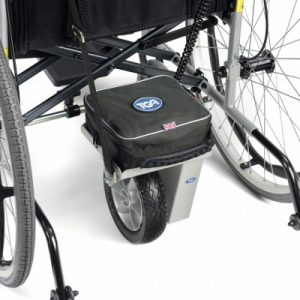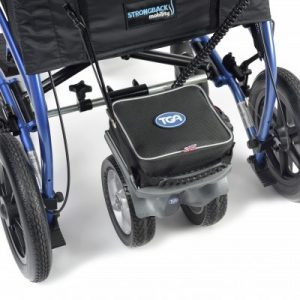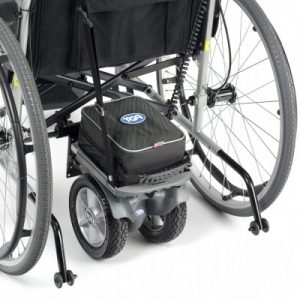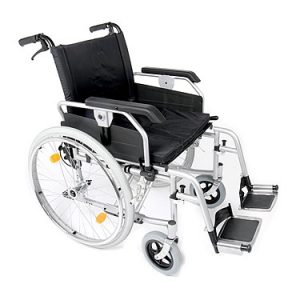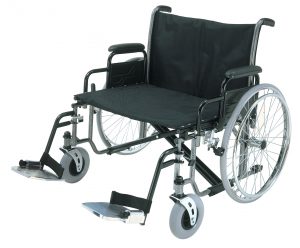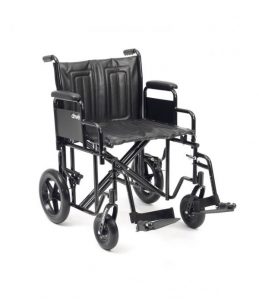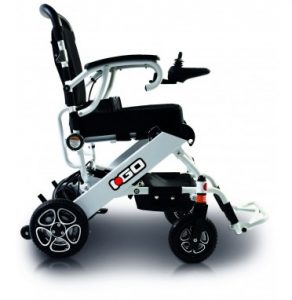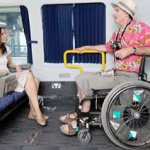Electric wheelchairs or powerchairs as they are also know come in many different guises these days and are designed for use in many environments but what is the difference between those intended for indoor use and those for outside use.
We look at the facts that matter which can help you when it comes to buying your next electric wheelchair.
Here at UK wheelchairs, we stock a very wide range of electric wheelchairs or powerchairs as they are sometimes referred to. We will only be reviewing models that we keep in stock which extends to more than 30 different electric wheelchairs from a range of manufacturers.
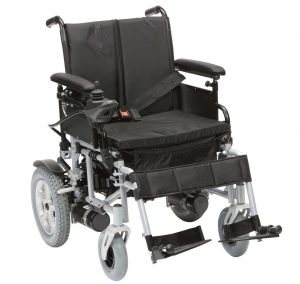
A relatively compact electric wheelchair that is well suited to use indoors and outside
The range of electric wheelchairs is wide and can be broken down in to 2 main categories, indoor and outdoor. Although you will see that many electric wheelchairs are suitable for both scenarios but maybe not as good as those designed for specific use.
Opposite is the Cirrus lightweight folding electric wheelchair
Making the right decision about the powerchair that you purchase is an important one and it will affect your ability to function and overall quality of life.
Size matters with an electric wheelchair
The key difference between an indoor electric wheelchair and an outdoor electric wheelchair boils down to its size and manoeuvrability. When inside users want to be able to move about their home at a suitable slow speed and be able to move about with confidence in confined spaces. Features that allow the powerchair to turn on the spot make everyday chores so much easier.
Indoor electric wheelchairs are therefore more compact in size and will often have different drive methods to those used by large outdoor electric wheelchairs that are intended for outside use.
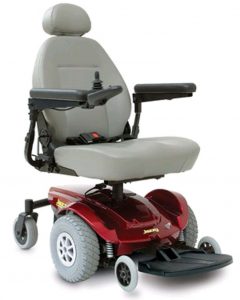
The Jazzy Select electric wheelchair with 6 wheels is not so small but is very manoeuvrable
All electric wheelchairs and powerchairs are made up of the same key components being a frame with power base, a seat and the user controls required to operate the chair. This said, there is a big difference in the design depending on its intended usage and whether that is primarily indoors or outside.
Model shown is the Jazzy Select 6 powerchair
Powerchair wheel configuration and benefits
There are a number of different configurations for powerchair wheels. Some models have 4 wheels and some have 6. The drive wheels can be the front wheels, centre wheels or the rear wheels and each bring their own benefits from an operational point of view.
Front wheel driven wheelchairs are generally better for avoiding obstacles making them more suited to indoor usage. Rear wheel drive powerchairs are generally better at delivering power and getting traction required for inclines. This makes rear wheel drive models far more suitable for outside work.
Electric wheelchairs that have 6 wheels and are driven by the centre wheels are the best for indoor use as they allow the powerchair to turn on the spot making intricate manoeuvres such as working in the kitchen far easier, where you may want to put items from the sink or draining board away in cupboards opposite for example.
Electric wheelchair battery range
The range of an electric wheelchair is dependent on a few factors including its weight, the users weight, the power of the batteries and motors. In essence, if you are opting for an outdoor powerchair then you are more likely to want to travel longer distances. During your travels you are likely to experience inclines which will require more power than flat terrain. More power requires bigger battery provision which can mean that more than one battery may be used. Similarly, with more load to overcome, the powerchair motor will need to be bigger or more than one motor might be required.
Indoor powerchairs tend to have less 'clutter' than outdoor chairs. Items like lights that are essential for outdoor models are either smaller or not evident on indoor models. Being smaller and lighter makes them more nimble and easier to carry out the basic tasks at home like passing through narrow doorways and accessing smaller rooms such as the toilet or bathroom.
An indoor powerchair will need less power as there are no hills, so batteries and motors can be fewer and smaller which helps to keep it compact and efficient for use inside.
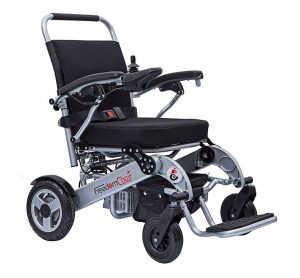
The Freedom electric wheelchair showing its compact size and folding frame.
An electric wheelchair or powerchair designed for outside use will need to cope with a wider range of terrain than their indoor counterparts. For this reason, wheels are typically larger to help them to deal with undulations and rough surfaces. The wheels are also typically wider which helps them distribute the power better and improve traction on lose or uneven surfaces.
The model shown is the Freedom A08 electric wheelchair
Outdoor powerchairs also provide more in the way of storage as it is expected that they are to be used for carrying goods such as shopping from A to B. This storage might be in the way of a basket and or under seat storage that will cope with larger volumes of goods.
How does my size affect the powerchair i should select
Of course, the user’s height and weight also need to influence they type and size of the electric wheelchair that you select. Other big considerations are transportability. If you envisage wanting to travel with your powerchair then it is essential that you are able to transport it with ease. Smaller powerchairs often have the ability to fold to make them more compact for transportation. Other models need to be partly dismantled to allow them to be small enough to fit within the car boot or other transport method. Other considerations like the height at the front will affect how easy it is to work at a desk for example. In this case the front needs to be low and maybe the arm rests will need to be flipped upwards in order to sit at the desk.
The costs of buying an electric wheelchair
Finally, cost is often a big factor in determining which type of electric wheelchair that you opt for.
Some of the latest designs such as the Freedom chair shown above can be purchased with options on the number of batteries you will require which will improve the range of the wheelchair but also increase the overall weight.
For further information and advice on selecting the right wheelchair for your requirements, the above video is very useful and covers both manual wheelchairs, electric wheelchairs and powerchairs.

